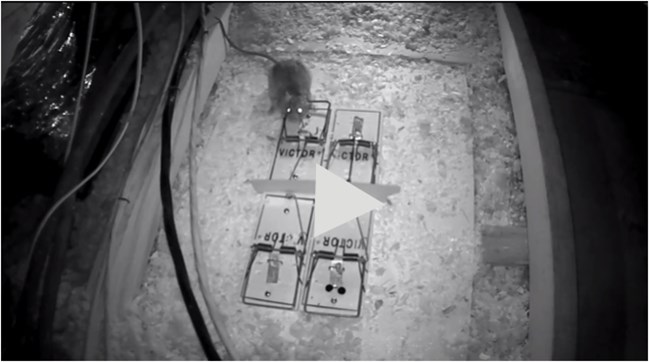Following up on our feature on double standards in spring trap welfare in the current edition of Pest magazine, the University of Oxfords Dr Sandra Baker has provided further helpful advice on what to look for in rodent traps.
For those who haven’t read the feature (if not why not – you can read it by downloading the PDF Call to end double standards in spring trap welfare, Dr Baker pointed out that exemption from regulation for mole traps and break-back traps for rats and mice has allowed ineffective and inhumane ‘snap’ traps to proliferate. She called for a Voluntary Trap Approval scheme so that manufacturers could put their traps through the existing system for regulated traps run by the Animal & Plant Health Agency (APHA).
| The call for a voluntary system was made during her presentation at the International Conference on Urban Pests in Birmingham this July. The presentation was based on research by Dr Baker and her team at Oxford which showed that impact momentum and clamping force of different traps for each species varied several fold. Some traps ‘snap’ with a force that is eight times weaker than others used with the same species. Some have a clamping force that is five and half times weaker than others. The research was conducted in 2012. Pest professionals need to be aware of what makes for an effective and humane trap as increasingly traps are being used for monitoring purposes and within integrated pest management systems. And other research by Dr Baker indicates that – since strychnine was banned in 2006 – mole traps have become the most widely used form of mole control on farms and amenities such as golf courses. |
|
|
| Most powerful trap not necessarily the best trap In our article we were concerned that Dr Baker was unable to tell us which brands of trap performed the best in these tests and which pest professionals should avoid. But, it turns out, that the most powerful traps would not necessarily perform best in practical use. Dr Baker explains: “In our 2012 study we measured mechanical performance (in the form of impact momentum and clamping force) and revealed big concerns about the variation in performance among traps. However our study didn’t look at body strike location, which is obviously also vital in terms of saying which traps are best for both welfare and efficiency and therefore which traps can be recommended. “Because we didn’t test strike location it would not be fair on trap manufacturers for us to identify certain brands as ‘best’ based purely on our mechanical study. “The most powerful traps may not strike accurately and could therefore be very inhumane. The only way to test both trap power and trap strike location is through killing trials. This is how APHA test regulated traps for approval – and that is why we propose that APHA could test unregulated traps in the same way.” She continued: “I would however be prepared to say that your readers should avoid traps which have both acute opening angles and ‘jaw’ type springs, since these were consistently weak and regardless of whether they were accurate in terms of strike location, they would still be weak.” |
||
| Approved traps are available Since publishing the feature in Pest 52, we have also been contacted by Daniel Schroeer from Futura in Germany. Daniel reminded us that Futura launched its Gorilla rat and mouse traps at PestProtect in Stuttgart in March 2016. Futura has used specially designed quality plastic and strong springs to produce what the company says is the first break back trap worldwide to be government approved – although, as is the case here in the UK, there is no legal requirement for snap traps to meet any approval standards in Germany. The German Federal Environmental Office has conducted detailed kill tests with the traps which they successfully passed. To pass the German Federal Environment Office tests, traps needed to render irreversibly unconscious – in this case the most common species house mice – within 30 seconds and maximum 60 seconds to be approved. In the test over 90% of the Gorilla Traps killed in 19 seconds proving the traps are extremely humane. |
|
|
| Additional features include a bait socket designed for use with NARA lures or NARA liquid and, on the rat traps, a fixing port for a transmitter to support the company’s eMitter digital pest monitoring.
Daniel explained: “It is our goal to have the trap approved by many more EU and worldwide governments. Sweden for example has, after examining the report and tests, accepted the high German standards and also given its approval to our product.” And he said that more countries are also in the process of approving the trap. There is no need for each country to conduct kill tests to find out the same thing, they just need to check they are happy with the German tests which have been performed according to EU standards so it is just a matter of time. He added: “We have been in touch with the UK authorities but they just told us that, because break-back traps are unregulated in the UK, no approval is needed there for such traps.” “It is also the first and only ‘Blauer Engel‘ certified trap. This is an ecological initiative promoting environmentally friendly products mainly in Germany. As it is the oldest ecolabel in the world it influences many other countries too,” adds Daniel. He also suggested that we are storing up trouble for the future by using weak rat traps. If neophobic rats escape from weak traps we may end up with generations of rats simply avoiding traps as the video below of a rat escaping from a snap trap from PCT online, the leading US pest management publishers, shows. |
||




